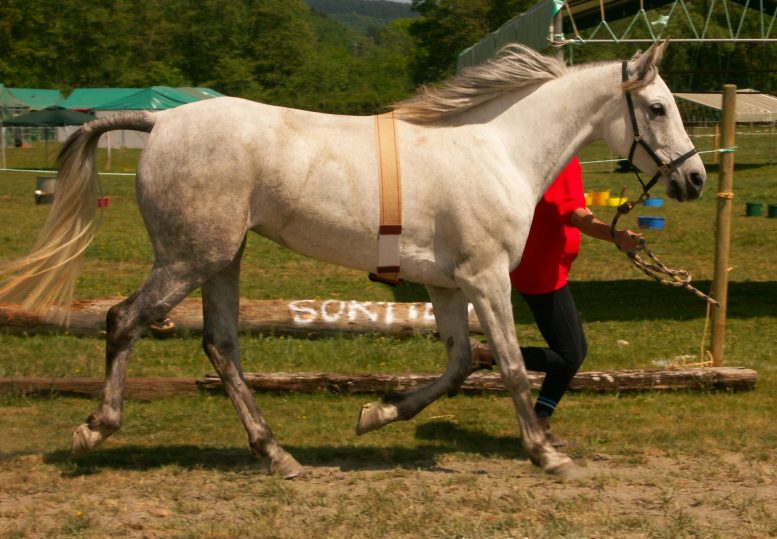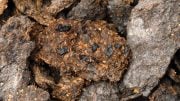
A typical endurance horse (Arabian breed) presented for a gait test before the start of the race to check locomotor soundness. During an endurance competition (100-160 km), horses must undergo veterinary inspection at the end of each 20 to 40 km loop to check their recovery and capacity to continue the race under good health conditions. The energetic expenditure during an endurance race is very high, so an interesting model to show the functional relationship between the microbiota profile and energetic metabolism at the level of the mitochondria. Credit: Eric Barrey
Study linking gut bacteria to more efficient energy generation in the cells of horses paves the way for dietary supplements that enhance their performance.
A horse’s gut microbiome communicates with its host by sending chemical signals to its cells, which has the effect of helping the horse to extend its energy output, finds a new study published in Frontiers in Molecular Biosciences. This exciting discovery paves the way for dietary supplements that could enhance equine athletic performance.
“We are one of the first to demonstrate that certain types of equine gut bacteria produce chemical signals that communicate with the mitochondria in the horse’s cells that regulate and generate energy,” says Eric Barrey, author of this study and the Integrative Biology and Equine Genetics team leader at the National Research Institute for Agriculture, Food and Environment, France. “We believe that metabolites — small molecules created by breaking down bigger molecules for food or growth — produced by these bacteria have the effect of delaying low blood sugar and inflammation in the cells, which in turn extends the horse’s athletic performance.”
Links to disease
Mitochondria, which can be briefly described as the energy provider of cells, have been shown in recent studies to be interdependent with gut bacteria. In fact, many diseases associated with mitochondrial dysfunction in humans, such as Parkinson’s and Crohn’s have been linked to changes in the gut microbiome in many previous studies.
“Studying horses is a good way to assess the link between gut bacteria and mitochondria, because the level of exercise, and thereby mitochondrial function, performed by a horse during an endurance race is similar to that of a human marathon runner,” explains Dr. Nuria Mach, first author of this paper, also based at the National Research Institute for Agriculture, Food and Environment, France.
She continues, “For this study we gained permission for veterinary doctors to take blood samples from 20 healthy horses of similar age and performance level, at the start and end of the International Endurance Competition of Fontainebleau, an 8-hour horse race in France. These samples provided information about the chemical signals and expression of specific genes, which is the process by which DNA is converted into instructions for making proteins or other molecules. To understand the composition of the horse’s gut bacteria metabolites, we obtained fecal samples at the start of the race.”
The researchers found that certain bacteria in the gut were linked to the expression of genes by the mitochondria in the cells. Furthermore, the genes that were expressed, or “turned on”, were linked to activities in the cell that helped it to adapt to energetic metabolism.
Evolutionary explanation
“Interestingly, mitochondria have a bacterial origin — it is thought they formed a symbiotic relationship with other components to form the first cell. This may explain why mitochondria have this line of communication with gut bacteria,” says Barrey.
Mach concludes, “Improving our understanding of the intercommunication between the horse and the gut microbiome could help enhance their individual performance, as well as the method by which they are trained and dietary composition intake. Manipulating the gut microbiota with probiotic supplements as well as prebiotics, to feed the good bacteria, could be a way for increasing the health and balance of the microbiome and horses, to better sustain endurance exercise.”
Reference: “Understanding the Holobiont: Crosstalk Between Gut Microbiota and Mitochondria During Long Exercise in Horse” by Núria Mach, Marco Moroldo, Andrea Rau, Jérôme Lecardonnel, Laurence Le Moyec, Céline Robert and Eric Barrey, 18 April 2021, Frontiers in Molecular Biosciences.
DOI: 10.3389/fmolb.2021.656204








What are the names of the probiotics that stimulated the mitochondria?